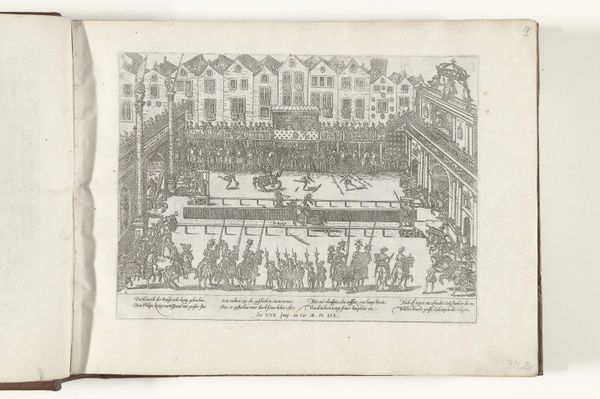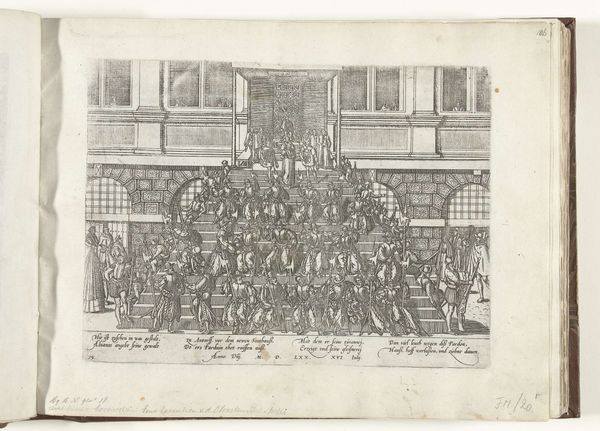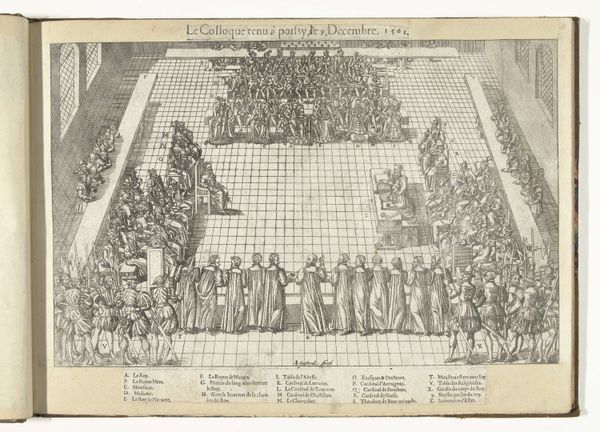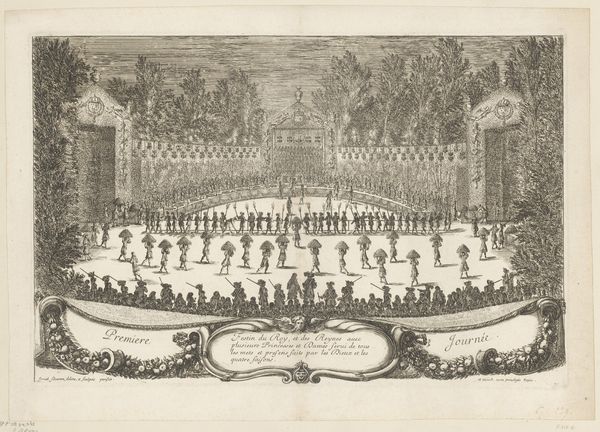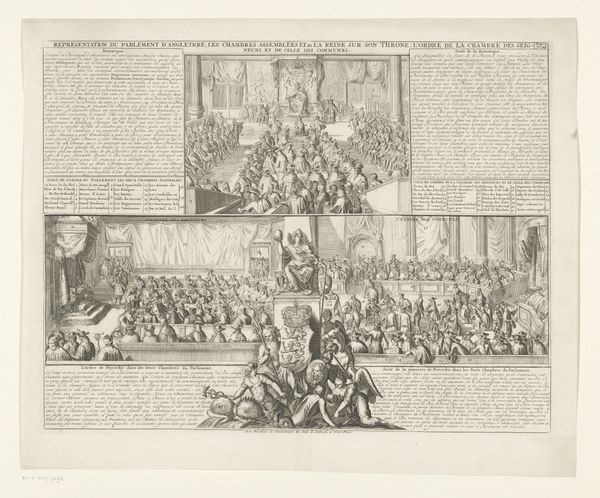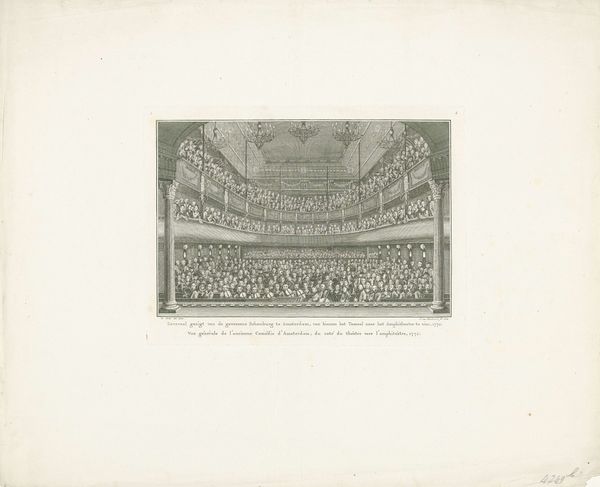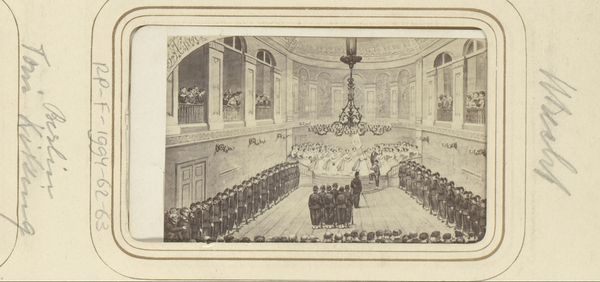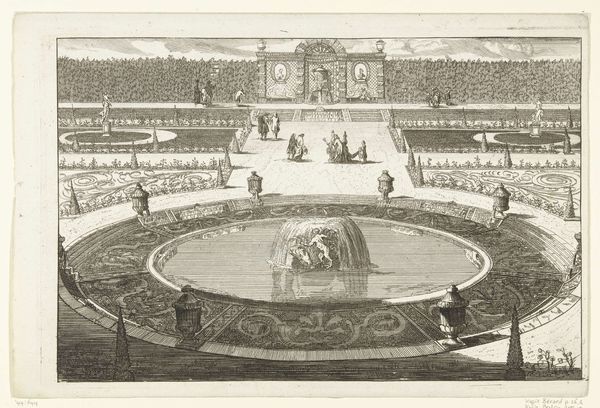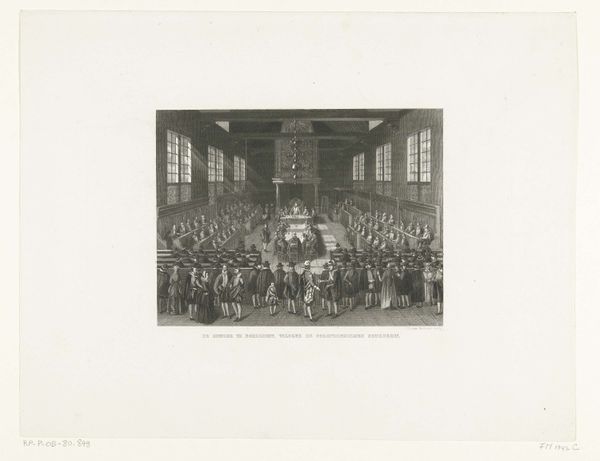
print, engraving
#
aged paper
#
toned paper
#
light pencil work
#
medieval
# print
#
pencil sketch
#
old engraving style
#
hand drawn type
#
personal sketchbook
#
geometric
#
pen-ink sketch
#
line
#
sketchbook drawing
#
history-painting
#
sketchbook art
#
engraving
Dimensions: height 206 mm, width 277 mm
Copyright: Rijks Museum: Open Domain
Curator: This is an engraving by Frans Hogenberg, likely produced between 1565 and 1573, titled “Colloquium te Poissy, 1561.” Editor: My first impression is of a meticulously constructed stage. The rigid geometry, especially the grid dominating the scene, feels incredibly controlled, even austere. Curator: It's printed, so this rigidity speaks to the deliberate production method. The creation of multiple impressions and wide circulation were crucial to its purpose: documenting and disseminating information. We should consider how this affects the material value—does its reproducibility alter our perception of its artistry? Editor: I’m more drawn to how the visual order interacts with the symbolism of the event depicted. Look at the rows of figures – each meticulously rendered, their placement indicative of hierarchy and power dynamics. Do you see any underlying narrative here? Curator: Absolutely, though that narrative is embedded within the labor that constructed the engraving. The precise lines were physically etched by someone using metal tools on a metal plate. What can the scale and apparent precision tell us about printmaking traditions of that time? Editor: But what’s more powerful is the way those precise lines come together to depict this historical religious debate. Each figure seems to carry symbolic weight, expressing ideological division in 16th century France. What emotions do you think viewers at the time would attach to them? Curator: Perhaps anxiety? Uncertainty? The rise of printing certainly amplified pre-existing anxieties concerning production methods and cultural authority during that time. Also, it prompts us to consider: Who was this work meant for and how accessible would have the printing plate been? Editor: Perhaps. And maybe also, a sense of hope or resolution or just intellectual fervor? Regardless, it’s striking how the formal composition—the rigid perspective, the serried ranks—enhances that symbolic density. Thank you. This image resonates so strongly through those elements. Curator: Agreed. Looking at the intersection of form and material grounds our interpretation and truly allows for a broader understanding.
Comments
No comments
Be the first to comment and join the conversation on the ultimate creative platform.

